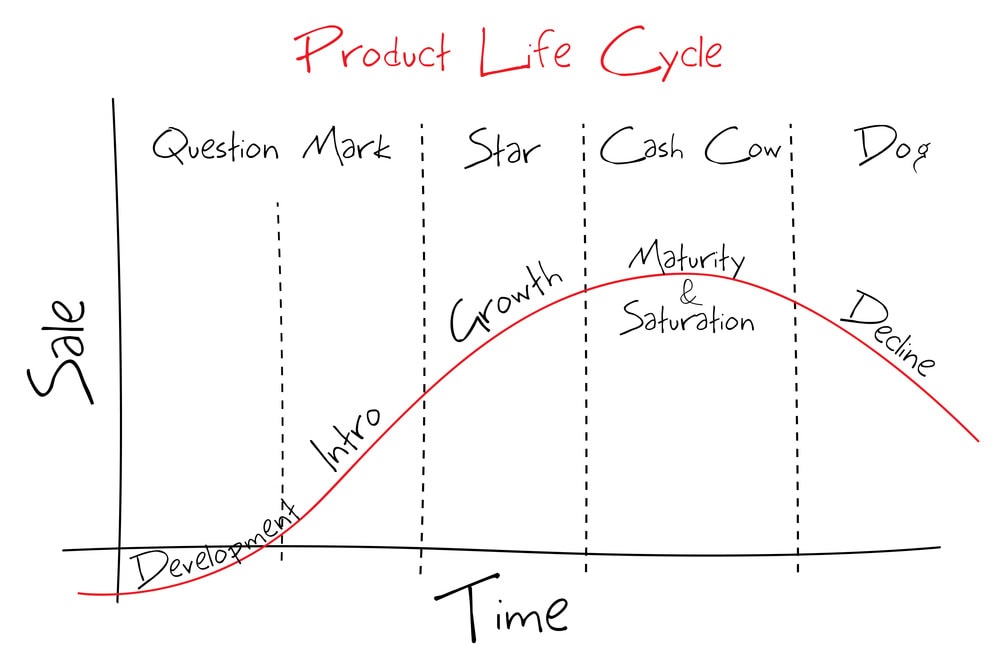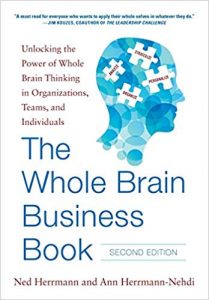Apple is no longer appealing to technology enthusiasts. This is an element of a well-known and perfectly executed strategy that is called “crossing the chasm”. Let’s try and explain what people who demand innovations from Apple just don’t understand.
Two Books Tim Cook Has Definitely Read
In 1991 a book titled Crossing The Chasm appeared, with the subtitle Marketing And Selling High-tech Products To Mainstream Markets. The author, Geoffrey Moore had worked in McKenna Group as a consultant for tech companies from Silicon Valley. It is there that he noticed a peculiar regularity when it comes to implementing innovations. But before I tell you about this regularity, I must introduce you to yet another book, because it contains an idea that was fundamental to what Moore was observing.
Exactly 29 years before Crossing The Chasm a groundbreaking work on implementing innovations saw the light of day: Diffusion of Innovations by Everett Rogers. If you are working in a business that is even remotely connected to innovations, both these titles are required reading for you. Rogers’ key idea was called product life cycle — he divided implementing the innovations into phases (development, introduction to the market, growth, maturity & saturation, and decline), then he named four groups of consumers who would be interested in innovation at each of the phases. These groups are:
- Innovators — technology enthusiasts, seeking new things, willing to sacrifice their convenience for the privilege of being first. Think of all those Dropbox beta testers or the ones who stood in line to buy the first iPhone back in 2007.
- Early Adopters — the visionaries who had read some enthusiastic reviews from the innovators and want to implement the new technology as soon as possible. They may be not willing to sign up for the beta test, but they are eager to read the first reviews and… buy soon after.
- Early Majority are pragmatics. They invest in technology when they see real benefits, and when someone has proven that it really works, the market is growing fond of it. Convenience and support are much more appealing to them than new features. They go to Radio Shack to buy a tablet and they choose the iPad “because everybody has it”.
- A Late Majority is a group of technological conservatives. They approach innovations carefully, and only when the solution becomes a de facto industry standard are they willing to give it a try.
- Laggards are very skeptical of innovations. If they could, they wouldn’t have changed a thing. The only reason they buy touch screen smartphones today is that they can no longer buy their favorite Nokias with big keys. The cloud in 2019? No kidding, there’s still time for that…

The chasm is where your innovative, disruptive products begin to spread among the mainstream users — the pragmatics are considering using it. And do you know what the problem is? Well, both groups on the left of the chasm want new features and performance while all the groups on the right of the chasm prefer convenience and reliability.
Abandon all your customers you who enter here
Quick question: do you know the name of the chip powering your phone? If you answered “yes” chances are you’re a technology enthusiast, you read the performance comparison tables, and it matters to you whether your phone has 64 or 128 GB of memory, whether it has a replaceable memory card. And if you answered “no”? You are more interested in a phone “just working” so you can do what you need to do with it (and by “what you need to do” you don’t mean “replacing the factory-issued ROM” or even “change the default system apps”). The first iPhone had apps (innovators were drooling over), yet it did not allow you to send MMS (pragmatics raise their brows in amazement). Crossing the chasm (i.e. targeting an innovative, disruptive product towards the mainstream market) means changing two things:
- First, you have to change the product itself, and its communication. Disruptive innovations in each generation are gradually replaced with incremental innovations. What changed in the latest iPhone? Battery life and picture quality. No bells and whistles, no wireless charging of your AirPods. It’s exactly what the market demands.
- Second, target customers change. And this means one of the most difficult business decisions you may be faced with: you need to abandon the people who were your customers so far. The very ones who brought you to the position you are in today. Simply because there’s just not enough of them to power your further growth.
- Case in point: sir Jonathan Ive. Also a visionary who complained that there was nothing left to design at Apple anymore. The company is reusing the same shapes and forms of the iPhone because it works. Because scaling is now more important than innovating.
Instagram: yes. Twitter: not so much.

There are many companies that struggle with crossing the chasm exactly because they are not able to implement the changes I mentioned above. Example? Twitter. The “other” social network not by their choice but because they’re struggling with increasing the market share. But it can’t be done without radical changes within the product itself, changes that will irritate the first, long-time, hardcore users. Twitter was trying. When they announced they were to abandon the 140-character limit of a single tweet, the hardcore users rebelled. The result? Twitter backed down a couple of times (though they shouldn’t have), implemented the change a couple of years too late.
Who did well? Take Instagram. I don’t know if you remember the beginnings of this app (it launched in October 2010) — also as a kind of “the other photo social network” (Flickr dominated the space back then). It differentiated itself with three functions:

- It was available exclusively on iPhones;
- didn’t allow you to add photos from Camera Roll (which meant you could only share the photos taken within the app, here and now)
- the only proportions it allowed were square photos.
The first Instagram users were proud of this “eliteness”. Well, it didn’t last. One day they woke up to Instagram opening itself to Android (March 2012), and abandoning the “in-app photos only” policy, allowing professional photographers to share their professionally-taken photos… Hardcore users screamed “Betrayal!” but nobody listened because Instagram grew like crazy.
In April 2012 it was bought by Facebook for around 1 billion dollars — an investment that proved great because in the following year Facebook grew only 3% while Instagram grew… 23%. So abandoning the innovators turned out to be a good thing.
Starting from August 2015 the photos no longer need to be square…
A Company Led By Accountants
“The company forgot what it means to make great products,”
Steve Jobs on Xerox’ demise

The pundits are comparing the above quote from Steve Jobs to Apple’s situation today. And this is exactly what crossing the chasm means. But there is one more thing… The recurring theme I often read is “Apple without Steve Jobs is not the same company. They lack passion and vision. Tim Cook’s Apple is a well-rounded tech company, but is it enough to keep a leader’s position?” The answer to this question was provided by Peter Robertson, an American-Belgian psychologist who specializes in management styles. Robertson took an analytical method called HBDI (Hermann Brain Dominance Instrument, developed some time ago for General Electric) and combined it with… Rogers’ product life cycle curve. HBDI is a tool that diagnoses which of the four parts of your brain is dominant when you’re making managerial decisions. These areas are:
- Logic (blue) — your thinking is analytical, you are fact-based, numbers matter.
- Vision (yellow) — you see “the big picture”, you rely on your intuition, you’re great at synthesis and connecting the dots (facts and areas that are seemingly not related).
- People (red) — your interpersonal relations are very important, you build emotional bonds, you are a great negotiator.
- Control (green) — procedures, planning, and details are what matters to you, you are a well-organized person.

Jobs was clearly a visionary, plus there were stories about his total lack of people skills. This — according to Robertson — is a perfect managerial style for the first phase of implementing an innovation: development. But when your product gains market share and you are faced with the challenges of growth, the “people” and “control” should be dominant factors in your decisions. And while Jobs obsessed over details, I don’t think he was a big fan of plans and procedures. Not to mention maintaining good relations with large groups of people. Yet this is exactly what Apple needed to leave the market niche.
Apple’s market share is bigger than BMW’s or Mercedes’ or Porsche’s in the automotive market. What’s wrong with being a BMW or Mercedes?
Steve Jobs (from Six Marketing Lessons)
Jobs was good at making BMWs. Tim Cook is the perfect “peacetime manager”. He listens to the market, he creates products based on the demand, not the vision, intuition or “because I say so”. Innovators don’t find it attractive, but… Apple is not for them anymore. Just think what Porsche’s hardcore users said when they first saw Porsche Cayenne. “Betrayal!”, “It’s not a Porsche!”. Think Mercedes A-Class, BMW 1… Will the company from Cupertino return to the graces of tech enthusiasts? It will have to, one day… Will they do it with Tim Cook? Well, I have to tell you about yet one more thing.
Jumping The Waves
Every innovation comes to an end — that’s why the product life cycle is shaped like a wave. And the company that intends to survive on the market has to behave like a surfer: it has to know when to jump to the next wave, the one that is on the rise. “Closing sails” on a market (since we stick to marine-and-ocean analogies) requires — according to Robertson — yet another type of a manager (or: management style). The one who ignores interpersonal relations when making critical business decisions. “Logic” and “control” are to dominate. No surprise there, “jumping the wave” means restructuring and often layoffs for the company. I’ve never seen Tim Cook’s HBDI test results, but I suspect he is more of a “peace-time manager” than “war chief”. So he’ll need substantial help from the rest of his team when the time arises. But — as they say in “Game of Thrones” — not today.
I’ll leave you with some more food for thought: perhaps it’s wise to listen to Publius Flavius Vegetius, a Roman historian who — in his De Re Militari (Latin for Concerning Military Matters) treaty wrote: Si vis Pacem, para Bellum. And perhaps this is exactly what Apple is doing right now. Automotive and health market are ripe for the taking when it comes to innovation.


